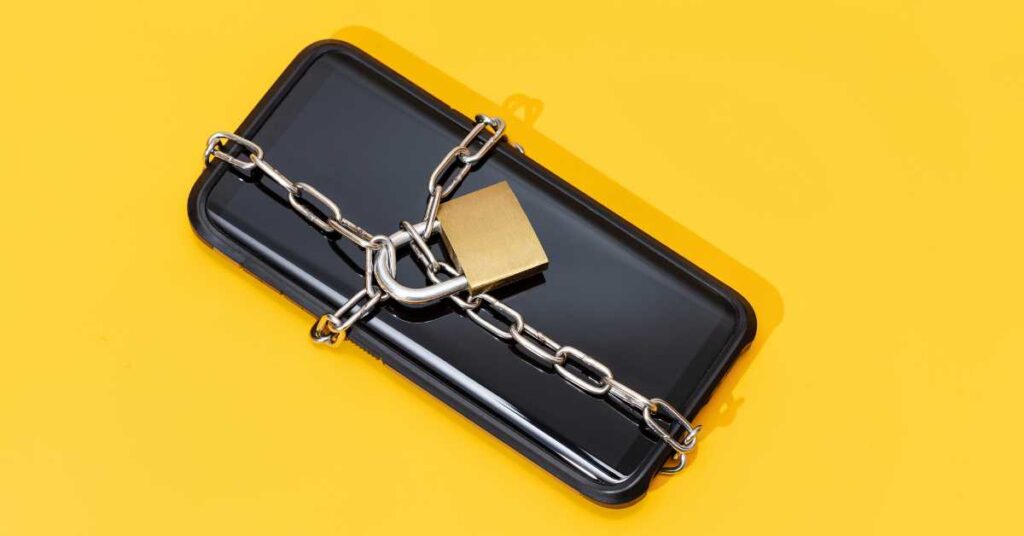Introduction
Losing a mobile device or falling victim to theft can be a distressing experience. Beyond the cost of replacing the device, the loss of personal data and potential security breaches can have far-reaching consequences. In this article, we will explore effective strategies and preventive measures to safeguard your mobile devices against theft and loss. By implementing these practices, you can minimize the risk of losing valuable data and ensure the security of your personal information.
Understanding the Impact of Mobile Device Theft and Loss
The Financial and Emotional Consequences
The theft or loss of a mobile device goes beyond the monetary value of the device itself. It can result in financial losses due to unauthorized usage, data breaches, or identity theft. Additionally, the emotional distress caused by the loss of personal data, photos, and contacts can be significant.
Potential Security Risks
Mobile devices contain a wealth of personal information, including passwords, banking details, and private conversations. If a stolen or lost device falls into the wrong hands, it can lead to privacy breaches and potential misuse of sensitive data.
Preventing Mobile Device Theft
Keeping Your Device Secure in Public Places
When using your mobile device in public, be vigilant and mindful of your surroundings. Avoid leaving your device unattended or exposed, as it can attract potential thieves. Keep your device within sight or secure it in a bag or pocket.
Avoiding Risky Situations
Certain situations increase the risk of device theft. Avoid displaying your device unnecessarily, especially in crowded areas or public transportation. Be cautious of distractions or unsolicited assistance, as they can be tactics used by thieves to steal your device.
Securing Your Mobile Device
Setting Up Lock Screen Security
One of the simplest yet most effective ways to secure your mobile device is by setting up lock screen security. Use a PIN, pattern, or password to lock your device, preventing unauthorized access in case of loss or theft.
Utilizing Biometric Authentication
Take advantage of the biometric authentication features on your device, such as fingerprints or facial recognition. Biometrics provide an additional layer of security, making it more difficult for unauthorized individuals to access your device.
Enabling Device Tracking and Remote Wiping
Tracking Services and Apps
Enable device tracking services offered by your device’s operating system or install reputable tracking apps. These services allow you to locate your device remotely, increasing the chances of recovering it or assisting law enforcement in the event of theft.
Remote Wipe Functionality
In addition to tracking, make sure to enable remote wipe functionality on your device. Remote wiping allows you to erase all data on your device remotely, safeguarding your personal information from falling into the wrong hands.
Protecting Your Data
Regularly Backing Up Your Data
Frequently back up your data to a secure location, such as cloud storage or an external hard drive. Regular backups ensure that even if your device is lost or stolen, you can restore your data on a new device without significant data loss.
Encrypting Sensitive Information
Encrypt sensitive information stored on your device to add an extra layer of protection. Encryption scrambles data, making it unreadable without the encryption key. Many devices offer built-in encryption features, which you can enable in the device settings.
Safe Storage and Carrying
Choosing Secure Bags or Pockets
When carrying your device, use bags or pockets with secure closures to minimize the risk of accidental loss or theft. Avoid loosely hanging bags or easily accessible pockets that can make it easier for someone to snatch your device.
Avoiding Obvious Indications of Valuable Devices
To reduce the likelihood of theft, avoid drawing unnecessary attention to your device. Use discreet cases or covers that don’t scream expensive or high-end device. Concealing your device’s branding or features can make it less attractive to potential thieves.
Utilizing Anti-Theft Apps
Features and Benefits of Anti-Theft Apps
Install anti-theft apps specifically designed to protect your device against theft and loss. These apps often offer features such as remote tracking, alarm triggers, and even the ability to capture photos or videos of potential thieves.
Tracking, Alarm, and Recovery Functions
Anti-theft apps enable you to track the location of your device, trigger alarms to deter thieves, and facilitate recovery efforts. Some apps even provide geofencing capabilities, notifying you if your device leaves a specified area.
Public Wi-Fi and Device Security
Risks of Public Wi-Fi Networks
Be cautious when connecting to public Wi-Fi networks, as they can be vulnerable to hacking attempts. Public Wi-Fi networks often lack proper security measures, making it easier for hackers to intercept sensitive data transmitted over the network.
Using VPN for Secure Connections
To protect your device and data while using public Wi-Fi, use a Virtual Private Network (VPN). A VPN creates a secure, encrypted tunnel between your device and the internet, preventing unauthorized access and eavesdropping on your data.
Educating Yourself and Others
Staying Informed about Device Security
Stay updated on the latest security practices and recommendations for mobile device theft and loss prevention. Keep an eye on reputable sources, technology blogs, and security experts to stay informed about emerging threats and preventive measures.
Sharing Prevention Tips with Others
Spread awareness and share prevention tips with friends, family, and colleagues. Educate others about the importance of securing their devices, using tracking services, and implementing security measures. Together, we can create a community of cautious device users.
Reporting Theft or Loss
Contacting Law Enforcement
If your device is stolen, report the theft to local law enforcement authorities. Provide them with all relevant details, including any tracking information or evidence you may have. Cooperation with law enforcement increases the chances of recovering your device.
Informing Your Service Provider
Notify your mobile service provider about the theft or loss of your device. They can assist in suspending your service, blocking the device’s IMEI number, or transferring your service to a new device.
Insurance and Device Protection Plans
Evaluating Insurance Options
Consider insuring your mobile device against theft, loss, or damage. Evaluate insurance options available through your mobile service provider or independent insurance providers. Understand the coverage, deductibles, and claim process before making a decision.
Considering Extended Warranty Plans
Some manufacturers or retailers offer extended warranty plans that cover theft or loss in addition to regular device malfunctions. Assess the terms and conditions of these plans to determine if they align with your needs and provide the desired level of protection.
Lost and Found Services
Utilizing Lost and Found Resources
In case of accidental loss, utilize lost and found services available in your locality. Contact local authorities, transportation services, or establishments where you may have lost your device. Online platforms and community-based forums can also be valuable resources for finding lost devices.
Online Platforms and Local Authorities
Explore online platforms specifically designed to help recover lost items, such as lost and found websites or apps. Additionally, report the loss to local authorities who may have a central database or process for tracking and returning lost property.
Managing App Permissions and Data Access
Reviewing App Permissions
Regularly review and manage the permissions granted to apps on your device. Restrict unnecessary access to sensitive data, such as contacts, location, or photos. Be cautious when granting permissions and ensure they are relevant to the app’s functionality.
Restricting Sensitive Data Access
Consider compartmentalizing sensitive data by using secure folders or encrypted vault apps. This way, even if your device is lost or stolen, access to sensitive information will be limited, adding an extra layer of protection.
Securing Your Digital Identity
Updating Passwords and Credentials
Regularly update passwords for your mobile banking apps, email accounts, social media profiles, and other online services. Use strong, unique passwords and consider utilizing password managers to securely store and manage your credentials.
Enabling Two-Factor Authentication
Enable two-factor authentication (2FA) whenever possible. This adds an extra layer of security by requiring a second verification step, such as a unique code sent to your mobile device, to access your accounts. 2FA significantly enhances the security of your digital identity.
Conclusion
Preventing mobile device theft and loss is crucial to protect your personal data and ensure the security of your digital identity. By following the preventive measures outlined in this article, such as securing your device, enabling tracking and remote wipe functionality, and utilizing anti-theft apps, you can minimize the risk of device theft and mitigate the potential consequences of loss or theft. Stay vigilant, implement security measures, and keep your mobile devices safe.
FAQs (Frequently Asked Questions)
What should I do if my mobile device is stolen?
• If your mobile device is stolen, first ensure your safety. Then, contact local law enforcement to report the theft. Provide them with all relevant details, including any tracking information or evidence. Additionally, notify your mobile service provider to suspend your service and block the device’s IMEI number.
Can I track my lost mobile device?
• Yes, you can track your lost mobile device if you have previously enabled tracking services or installed tracking apps. These services allow you to locate your device remotely, increasing the chances of recovery. Contact the respective tracking service or app to initiate the tracking process.
What should I do if I lose my device in a public place?
• If you lose your device in a public place, first retrace your steps and check nearby locations where you may have left it. Inform local authorities or establishments where you suspect the loss occurred. Utilize online lost and found platforms and community resources to increase the chances of finding your device.
Is it important to back up data on my mobile device?
• Yes, regularly backing up your data is crucial to ensure you can recover your important information in case of loss, theft, or device damage. Back up your data to secure locations such as cloud storage or an external hard drive. This ensures that even if your device is lost or stolen, your data remains accessible.
What can I do to prevent unauthorized access to my lost or stolen device?
• To prevent unauthorized access to your lost or stolen device, enable lock screen security with a PIN, pattern, or password. Utilize biometric authentication features such as fingerprints or facial recognition. Additionally, enable remote wipe functionality, so you can erase all data on the device remotely to protect your personal information.






